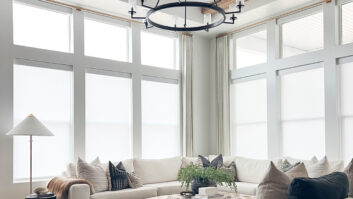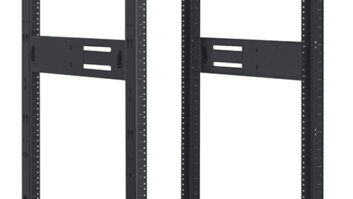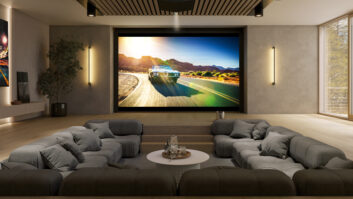Doing It Right Means Four Subs With Proper Delays And Levels
Let’s face it; bass is one of the most important aspects of the home theater and music experience. Walk away from any demo or any showroom, and it’s doubtful that you will ever here the comment, “Man, that midrange was exquisitely clean and resonance-free,” or “What amazingly sweet and detailed highs!” No, you will hear something along the lines of: “Dude, that low end kicked ass.”
Everyone loves bass (especially men, which is an interesting study that I will leave to someone with a PhD in somatic psychology). This is evidenced by the million ways that people have dreamed up to produce ultimate bass. There is everything from full-range speakers all around, to small speakers with one subwoofer stashed in a corner, to the unbelievable room-under-the-listening-room filled with a labyrinth of passages and transducers. If you are an enthusiast, you may have the time and resources to try (and discard) random solutions to your heart’s content. But custom integrators need something a little more concrete–a more scientific approach that yields predictable and repeatable results. We work on many projects that all need to sound good, not one
THE GAME PLAN
Fortunately, a method does exist for achieving reliable bass response. Even better, it’s not that hard to follow. You start by acquiring the right hardware, specifically an AV controller that will apply a crossover to the main channels, combine them with the LFE channel, and send the sum to a subwoofer output. This should be easy to find, because almost every controller on the market will do it. Be sure to set all the speakers to “small” and enable the subwoofer output.

Paradigm PDR Series v4 subwoofer
What you need next may be a little harder to locate: a signal processor/equalizer that takes the single subwoofer output and splits it into four feeds with separate delay and level controls. There are several such devices on the market, some of which are from the pro-audio and commercial AV channels. Thankfully, many of these units sound really good and are very reliable.
You will also need four identical subwoofers, which are either in-wall or in-room. However, don’t fall prey to the thinking that you can use really small subwoofers just because there are four in the system. Ultimately, you want 110dB SPL of bass headroom, so use subwoofers big enough to get there. If one gets you to 100dB SPL in the middle of the room, two will typically do 104dB, while four will do 108dB, etc. You can probably scale down a little bit by going to four units—four 15-inch models instead of one 18-inch sub, for example.
Finally, you’ll need a spectrum analyzer to measure frequency response. Plan on using one with one-twelfth-octave resolution, because onethird octave just isn’t enough to see all that’s happening in the bass region.
PUTTING THE PLAN IN PLACE
With all your material in hand, begin placing the subwoofers. This used to be the most challenging part of the process, but not anymore, thanks to excellent research done by Todd Welti of Harman International. (Todd’s work is available by visiting www.harman.com/wp/pdf/ multsubs.pdf) With four subwoofers, you have two choices: put one subwoofer in each corner, or put one subwoofer at the mid-point of each wall. The former yields slightly higher output capability, while the latter produces smoother frequency response. Try both; it’s your call. If you’re really hardcore, then you can even put some of the subwoofers at floor level, some at the ceiling, and some in between.
Next, you’ll want to hook one subwoofer to each output of your four-way processor box, zero all its controls, and run low-frequency pink noise through the system. With your analyzer, measure the response at each of the seats. If you’re lucky, it will be nice and smooth, with little change from seat to seat. Unfortunately, sound pays no heed to luck, so you will probably have peaks and dips to fix.
Now the fun part begins. Using the controls in

Anthony Grimani ([email protected]) is president of Performance Media Industries, a California-based acoustical engineering firm specializing in home theater design and calibration. your processor, make delay and level adjustments to each subwoofer until the response differences between seats even out. Once you have found the best combination of level and delay for the four subwoofers, flatten out the frequency response of all four together, using parametric equalization. Focus on knocking down peaks, and make sure to measure an average of the response across the room, not just one seat location.
Once you’ve achieved the best response, adjust the subwoofer output level of the AV controller to balance the four-subwoofer combo to the correct absolute SPL (usually 75dB).
ADDITIONAL THOUGHTS
I wish I could tell you a secret formula for how to make the right level and delay adjustments every time, but it’s still very much an interactive and experimental process. All I can say is that very experienced people, myself included, are working hard to find the answer. It’s only a matter of time.
Meanwhile, one very cool tool that you might want to consider is a measurement system called LASSIE (www.seagraveinstruments.com). Without going into a detailed explanation, LASSIE essentially enables you to visually map the SPL at a given frequency at numerous points in a room, all at the same time. An analyzer with a multiplexer is limited to four locations; LASSIE provides upwards of 25 locations. It’s a great tool to make the measurement process a little easier.
Now, I know what some of you are going to say: “This only works in a rectangular room, and I never get a rectangular room to work with.” First of all, if that’s what you’re thinking, you need to pat yourself on the back for being well educated. Bass response in non-rectangular rooms is more difficult (if not impossible) to predict. However, by using multiple subs with variable delays and levels, you can still make in-the-field adjustments to maximize the performance of your subs. Perhaps you don’t need four; three might do. In fact, I have a friend who achieved outstanding results using only two subwoofers in a southwestern-style house with a completely open floor plan.
The point is to use delays and levels to change the way the subwoofer system interacts with the bass resonances in the room. There is a combination that will work. It’s just up to you to find it.
Chase Walton contributed to this article.







